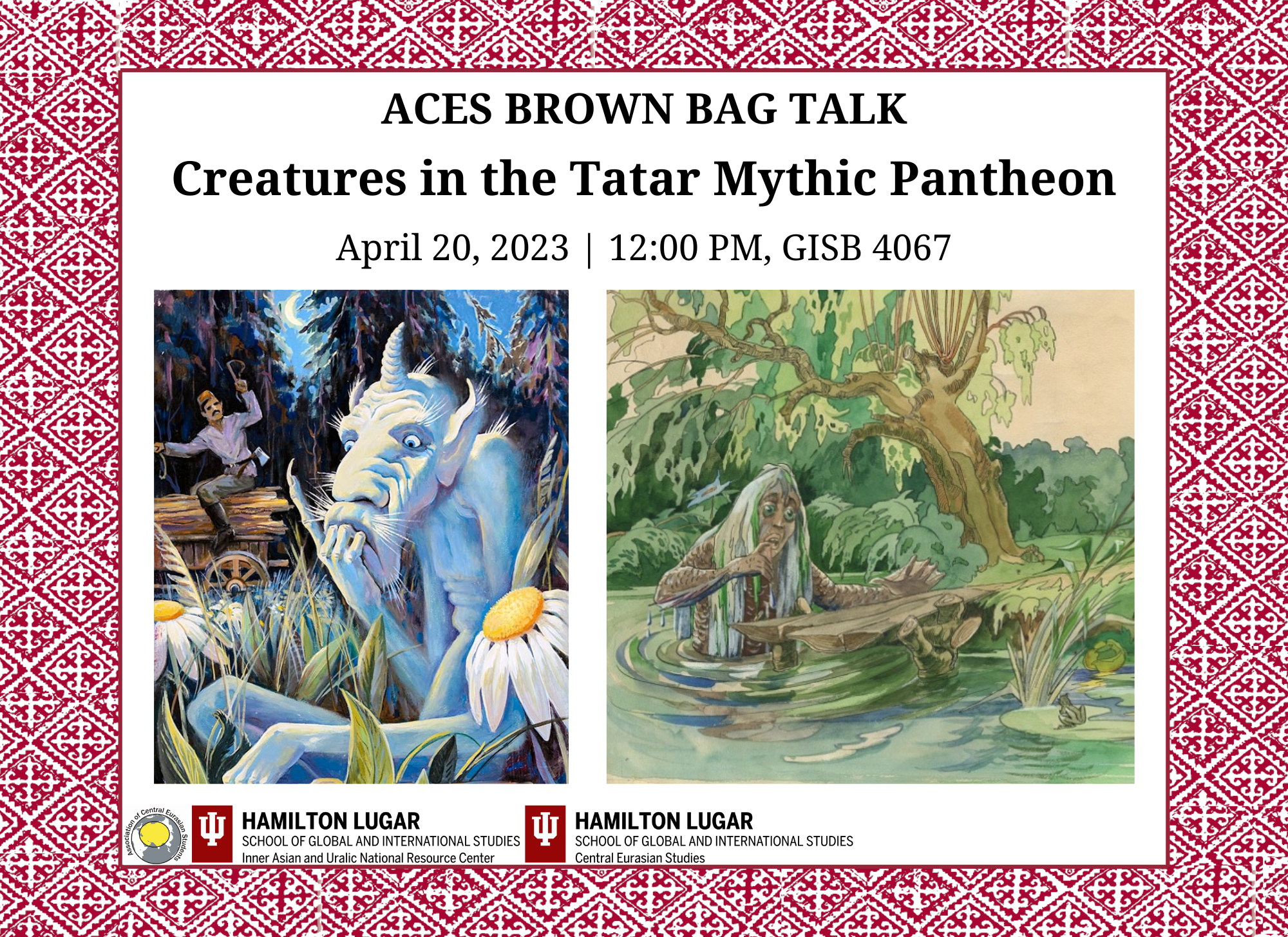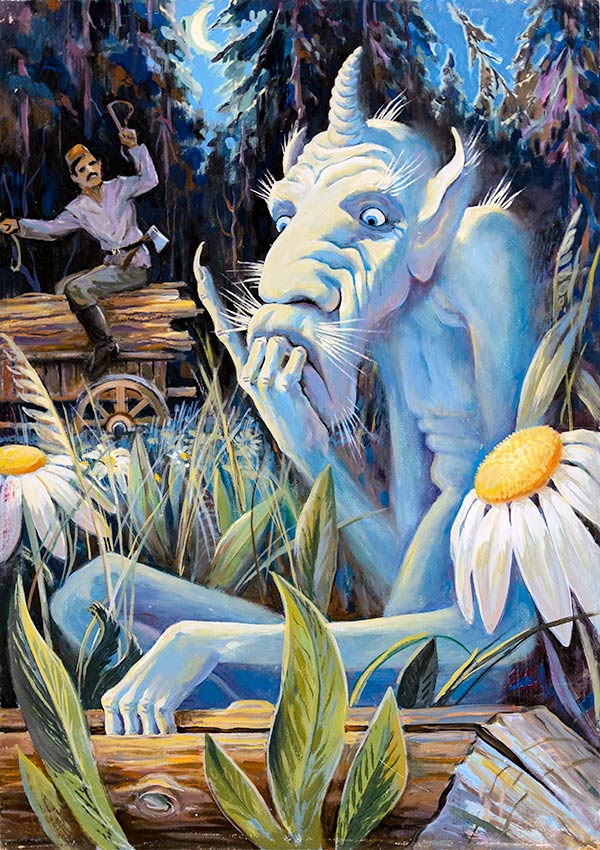On April 20, a scholar at IU gave a detailed presentation about the role of Tatar language, religious values, and mythological creatures in modern Tatar life and identity. The presenter explored several avenues of exchange between culture and everyday language use in the context of the Tatar mythological pantheon.
The Republic of Tatarstan, an autonomous republic of the Russian Federation with an estimated population of four million bordering the republics of Chuvashia, Bashkortostan, and Orenburg Oblast’, is an important world heritage site characterized by exchange between numerous cultures. This history of exchange is reflected in the figures that inhabit the Tatar mythological world as well as beliefs about them. As the presenter explained, the most localized aspects of Tatar life and social interactions possess intersecting religious, spiritual, and cultural nuances that express a deep connection to the Tatar pantheon. Many figures in Tatar mythology – such as the spirits that take dominion and stables within a home to ensure that they are kept tidy – furnish daily life with a cause-effect relationship between concepts of duty, responsibility, and harmony in the mundane and extramundane. In addition, traditional Tatar crafts and artistry incorporate a delicate balance of Islamic spiritual values with Tatar aesthetic influence, such as the ubiquitous form of hanging Quranic Shamail inscriptions decorated with Tatar adornments in the doorways of homes.
The presenter proposed cultural codes as an analytical structure to demonstrate the importance of mythological figures. Cultural codes define a set of images or aesthetic values that groups consistently associate with stereotypes or generalized ideas. Tatar mythology influences everyday language use through the presence of widely-recognized euphemisms and descriptions that draw upon the popularity of Tatar mythological figures to create language use forms that are universally intelligible for Tatars in both Tatar and Russian languages.
Shurale, a forest spirit in Tatar myths and legends.



